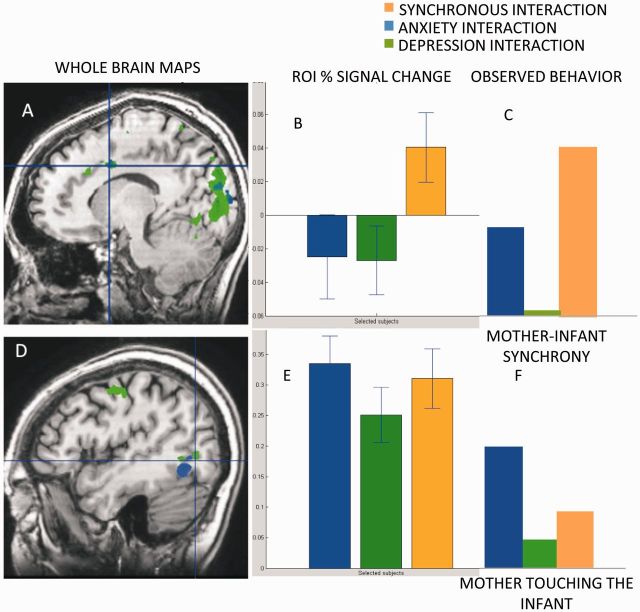Fig. 4.
Brain response in the overlap between the two contrasts of synchrony > depression and synchrony > anxiety. (A) dACC in the overlay of maps synchrony > depression and synchrony > anxiety. (B) Dorsal cingulate percentage signal change respond more during the synchrony interaction (in orange, levels of synchrony are demonstrated in (C). (D) Fusiform activation in the overlay of maps synchrony > depression and synchrony > anxiety. (E) Fusiform percentage signal change. The more maternal behavior is presented in the film (F), the stronger the percentage signal change, regardless of synchrony.

